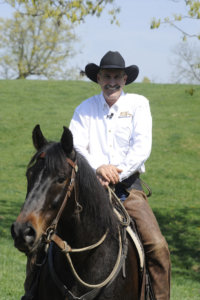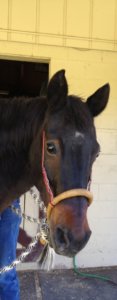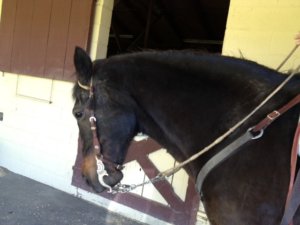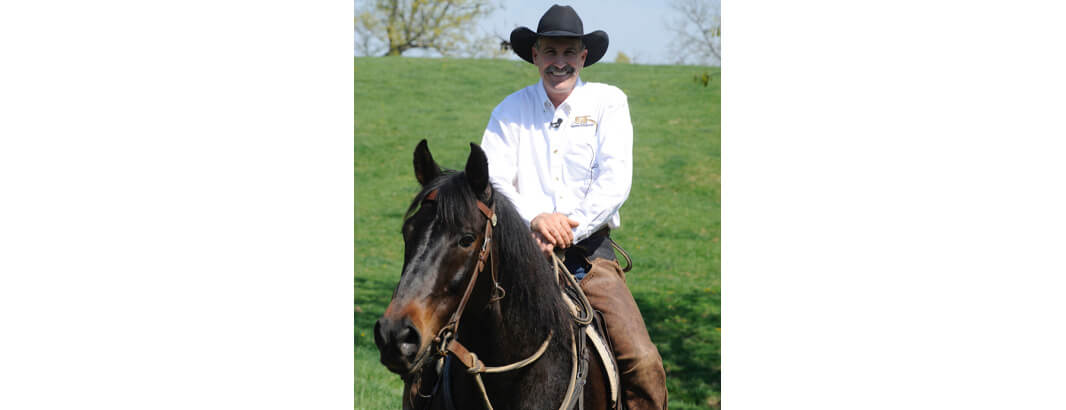How Your Horse’s Headgear Influences Movement and Behavior
by Dennis Reis and Corinne Burt

Walk into any tack shop or open any tack catalog and you’re likely to be overwhelmed with the arsenal of available bits and bridles. Most specialty bits that are marketed to solve behavior issues will only temporarily address a symptom of a deeper problem, and usually not for long. A bit is a tool that is only as good as the hands using it. A surgeon with a scalpel gives the patient comfort. A five-year-old with the same scalpel? Not so much. The wrong bit in the wrong hands will cause severe pain and behavior problems that go far beyond your horse’s mouth.
Horses are not designed to carry weight on their backs so if we want to ride them, we have a responsibility to teach them to rebalance themselves to adjust to our weight. Reins attached to bits and bridles help us help our horses do this. To carry weight on his back comfortably and safely, a horse must shift his weight more toward his hindquarters by contracting his abdominal muscles and lifting the middle of his back (where the saddle sits). An inappropriate or improperly used bridle will cause the horse to hollow his back and shift weight to his front end making him uncomfortable, dangerous to ride, and possibly lame.

To use any bridle or bosal properly the rider must have an “independent seat.” This means they can walk, trot, and canter without using the reins for balance. Although a bridle can facilitate a horse’s balance while he stops or turns, it should never ever be thought of as a steering wheel, a brake, or a behavior modification tool. The primary means of turning or stopping a horse is always the rider’s seat and legs and knowledgeable, informed horsemanship is what solves behavior problems.
There are two very broad categories of bits: those that are designed to influence the horse’s axis joint and those that are designed to influence his atlas joint (bits that are hybrids of these two categories only mask rider deficiencies). Snaffle bits and bosals function in similar ways in that they produce lateral flexion at the axis joint. The axis joint is the second joint in the horse’s spine. It can move sideways easily but has little range of motion up or down. Relaxation of the axis joint causes relaxation throughout the body and causes the atlas joint (the poll) to drop downward. This produces a vertical flexion posture of the horse’s head. This posture enables the horse to lift his back, contract his stomach muscles, shift his weight, and respond to the rider’s seat and leg aids. In other words, a vertical flexion posture prepares a horse to be ridden.

Leverage bits produce vertical flexion directly at the poll without relaxing the axis joint first. The poll is a ball-and-socket joint that connects the skull to the rest of the spine. It can move up, down, and sideways. If vertical flexion is forced from the poll with a leverage device without relaxation of the axis joint first, the result will be tension and brace throughout the horse’s body, causing him to be unable to carry weight comfortably or respond to the rider’s aids.
The vast majority of horses and riders, no matter the discipline, should be using bits and bridles that directly influence the axis joint. These are non-leverage devices—snaffle bits and bosals—that produce lateral flexion only. Bits and bridles that directly influence the poll through leverage are appropriate for only the most experienced riders and highly educated horses. An easy way to distinguish between leverage and non-leverage tools is to look at the place on the bridle where the reins attach. If they attach directly to the nosepiece of a bosal or the end of the mouthpiece on the bit, then it’s a non-leverage tool. If the reins attach to a shank that hangs from the mouthpiece on the bit, then it’s a leverage device.
A bosal or snaffle bit is used to teach a horse to carry a rider in such a way that he can always respond to the rider’s most subtle seat and leg aids. Generally, the narrower the snaffle bit or bosal the more concentrated pressure the horse feels. So a greener horse or less experienced rider should be using a wider snaffle bit (as it fits the horse’s mouth) or a wider, softer nosepiece on the bosal.
Leverage devices are refinement tools and nothing more. They should only be used when the horse consistently carries himself correctly with weight on his back and responds to the rider’s seat and leg aids with a snaffle bit or bosal. The only pressure a horse should feel once he wears a leverage bit in his mouth is the weight of the reins. The rider should never have to make direct contact on the reins to produce vertical flexion. If this does happen, the tool is being used improperly and it should be replaced with a snaffle bit or bosal right away. An educated horseman who uses a leverage bit will periodically go back to a non-leverage device to reaffirm the horse’s prior training.
About the Authors:
Internationally acclaimed Master Horseman Dennis Reis founded the Reis Ranch School of Universal Horsemanship in 1988. He has been featured in numerous horse publications and has been a regularly-featured clinician on RFD TV since 2002. Reis regularly tours the U.S. teaching workshops and giving demonstrations based on his Mentor Series Courses.
Corinne Burt is a Reis Ranch instructor and dressage trainer. She has studied with Dennis Reis for 14 years. She has also studied with numerous national and international dressage trainers. Burt is also Reis Ranch’s publicist.
Published June 2013 Issue

The Northwest Horse Source is an independently owned and operated print and online magazine for horse owners and enthusiasts of all breeds and disciplines in the Pacific Northwest. Our contemporary editorial columns are predominantly written by experts in the region, covering the care, training, keeping and enjoyment of horses, with an eye to the specific concerns in our region.


